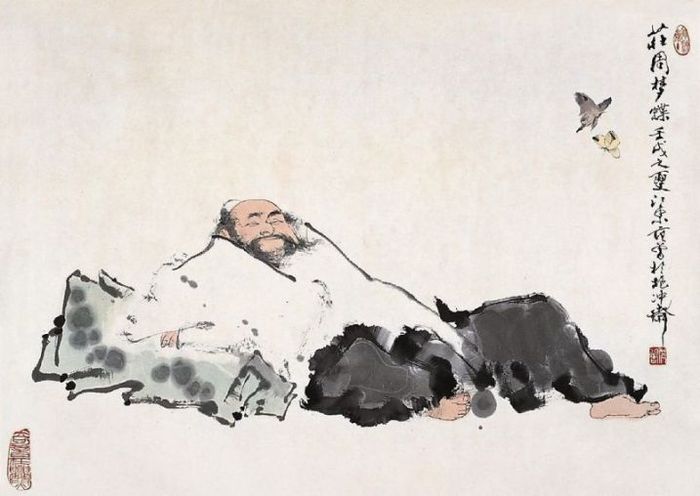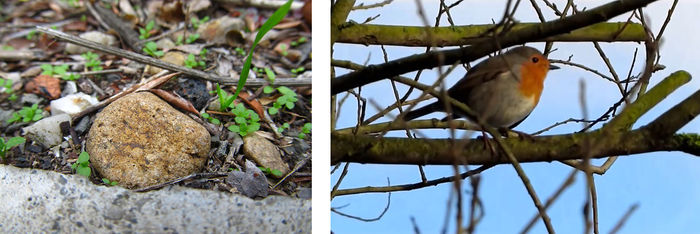Graduate Proposal SOL
Abstract To equate “reality” with art, understanding their relationship, and its significance is something unknown. The unknown makes us curious and make us want to invest or believes in them. It has to be something, we want an answer, it can’t be nothing. The desire is so big that we want to know, so we use or imagination.
Would you believe in what you believe in if you were the only one who believed it?
The world we experience is not an exact image of objective reality; it is a virtual reality, generated from sensory input filtered through theories, knowledge, emotion, associations and so on. We do not experience reality directly. We have to desire to place things in order, even our own perceptions. Perception can be obscure and mysterious, magnifying our suspicions to facts, to the degree where they seemed fundamentally “genuine”. To equate “reality” with art, understanding their relationship, and its significance is something unknown. The unknown makes us curious and make us want to invest or believes in them. It has to be something, we want an answer, it can’t be nothing. The desire is so big that we want to know, so we use or imagination.
Practice part 1
I created two video compilations, one of the search ‘Ufo Nederland’, the other one of the search ‘Jesus in the sky’, both on Youtube. You see is a whole lot of skies with flashing lights or clouds, and the responses on the background of the video, sometimes with some nice added sounds and visuals, to support that there is something there. Most of the time you see nothing, just empty sky. You experiencing their informed desire, through the video that they make and trying to give proof that it is real by putting it online. We all see the same things because they are shared symbols. If you believe in god, you will see him all the time. Symbols are often conceptualised as intersubjective only to the extent that they are shared. Language, it is said, is composed of symbols that we share, and because we share these symbols we are able to communicate, it’s the psychological relation between people.The sky in the videos feels also like an abstract painting, for example by the famous painter Rothko, where you get an overwhelming emotional experience by just looking at his colourful painting. The work as a mental exercise. I feel like the world is very rich, if only just the sky can trigger your imagination and your beliefs.
I believe during the video compilation of the ‘Ufo Nederland’ and ‘Jesus in the Sly’, the video makers are experiencing an MacGuffin. The MacGuffin is a pure void which functions as the object cause of desire. There is something that attracts the viewer but what it is, is not clear, it spins a story around nothing. A pure nothing which is none the less efficient. An MacGuffin is a goal, desired objects, or other motivator. The types of MacGuffin can be an object, place, person, or more abstract, victory, glory, power, love, or some unexplained driving force. Most clear MacGuffin’s you will see in movies like the suitcase of Pulp Fiction, as a void and the whole story spins around this suitcase. In art you see MacGuffin all the time, as a placeholder, or as frame. for example what I did with the Journey to Fuji story, the symbol was mine MacGuffin and I created a story around it. According to Sjavoj Zizek’s reading of the MacGuffin, through which he interprets Lacan, the real itself does not exist, it is present only in a series of effects, but always in a distorted, displaced way. Fantasy appears, when we have a desire of something, of the lack of something, but at the same time fantasy itself provides the co-ordinates of our desire- which constructs the frame enabling us to desire something.(Sjavoj Zizek, The Sublime Object of Ideology, 1989) Through fantasy we learn how to desire.
Fantasies have to be unrealistic, because the moment that you get what you seek, you don’t want it anymore. In order to continue to exist desire must have its objects perpetually absent. It’s not the ‘it’ that you want, it’s the fantasy of ‘it’. Desire supports crazy fantasies. What it means to be fully human is to strive to live by ideas and ideals and not to measure your life by what you give attained in terms of your desires. Because, according to Lacan, in the end, the only way that we can measure the significance of our own lives is by valuing the lives of others.(Jacques Lacan, Encore, 1972)
So let me be clear on this, I don’t try to fool the viewer or make a gimmick, I want to examine their beliefs. To believe in desires we have a goal in life, they give us pleasure, or joy, or even healing. When we achieve a desire, we create a new one. We find ourselves believing, and believing in whatever we perceive as enabling us to thrive.
Practice part 2
My next step is I have this placeholder, the story of Zhuangzi Zi, The Butterfly Dream, and I’m going the change the words Zhuangzi and Butterfly to create a different kind of relationships, and a different intersubjectivity. With this placeholder I created visuals, the story is to support they images.
Original
Once upon a time, I, Zhuangzi, dreamt I was a butterfly, fluttering hither and thither, to all intents and purposes a butterfly. I was conscious only of following my fancies as a butterfly, and was unconscious of my individuality as a man. Suddenly, I awaked, and there I lay, myself again. Now I do not know whether I was then a man dreaming I was a butterfly, or whether I am now a butterfly, dreaming I am a man. Between a man and butterfly there is necessarily a barrier. The transition is called Metempsychosis.
Metempsychosis: The transmigration of the soul, especially the passage of the soul afterdeath from a human or animal to some other human or animal body.
Version 1
Once upon a time, I, stone dreamt I was a bird, fluttering hither and thither, to all intents and purposes as a bird. I was conscious only of following my fancies as a bird, and was unconscious of my individuality as a stone. Suddenly, I awaked, and there I lay, myself again. Now I do not know whether I was then a stone dreaming I was a bird, or whether I am now a bird, dreaming I am a stone. Between a stone and bird there is necessarily a barrier.
Version 2
Once upon a time, I, tree dreamt I was an elephant, tramping hither and thither, to all intents and purposes as an elephant. I was conscious only of following my fancies as an elephant, and was unconscious of my individuality as a tree. Suddenly, I awaked, and there I lay, myself again. Now I do not know whether I was then a tree dreaming I was an elephant, or whether I am now an elephant, dreaming I am a tree. Between a tree and elephant there is necessarily a barrier.
Relation to previous practice
Last year I found a practice and language as a visual artist reflecting media culture by playing between fact and fiction. During the third Thematic Project with Florian Cramer I embraced myself as a storyteller and maker. Creating disappearance of an object/image, by showing my own categorization (like Borges) with (hard to classified) existing, non- existing and fantasy animal illustrations. By showing this with a slide projector creates an zoology class in the old-days. You will not know what’s real or not, you enter my little fantasy world. The Guide shows you the classification of alive, extinct and fiction with a short description of the animal. The text involved also a combination of factional and fiction. This all together with an audio voice telling you this descriptions and when you have to go to the next slide, makes my installation of Zoology Illustration completed. It was an appealing and surprisingly accessible visual installation. The work shows an artistic competence and sovereignty of concentrating on necessary aspects.
Method
Last year I created a Uncreative Tool for methodologies, this year I’m going to expend this tool and use it as a guide for my graduate project. This tool is to help you in a creative process by showing u all different kind of ingredients what you can use on your topic, object, image, your start.
Ingredients:
· Copy
· Combine
· Create Something Different
· Translate
· Transform
· Reverse
· Destroy
During my own project-process I create more ingredients for the Uncreative Tool, so this tool is also an ongoing process.
References
Books:
Matilda O'Donnel MacElroy, Alien Interview, 2008
Milton William Cooper, Behold a Pale Horse, 1991
Col. Philip J Corso, The Day After Roswell, 1997
Headquarters United States Air Force The Roswell Case, 1963
Headquarters United States Air Force, The Roswell Report, 1995
George Duthuin - Unimaginable Museum
André Malraux - Imaginary Museum http://www.imaginarymuseum.org/MIM/index.html
David Joselit - After Art
Hito Steyerl - The Wretched of the Screen
Thierry de Duve - Kant after Duchamp
Borges - Book of imaginary Beings
Baudrillard - Simulacra & Simulation
Barthes - The Reality Effect
Umberto - Travels in a Hyper Reality
Luigi Serafini - Codex Seraphinianus
Brain in a vat
Zhuangzi - The Butterfly Dream
Zizek - The Plague of Fantasies
Zizek - The Sublime Object of Ideology
Zizek - Welcome to the Desert of the Real
Magazine:
Elephant Issue 23 - What is Post-Internet Art?
Links:
http://www.wired.com/insights/2014/03/internet-one-step-away-advanced-digital-earth/
http://www.bbc.com/future/story/20141015-will-we-fear-tomorrows-internet
http://www.e-flux.com/journal/too-much-world-is-the-internet-dead/
http://johncrossley.co.uk/John_Crossley/Leeds_13.html
https://www.youtube.com/watch?v=AvhPvTa_pT8 _> Alien autopsy
http://www.circlemakers.org/ _> Steve
http://www.forensic-architecture.org/ _> Susan Schuppli (Annet)
http://www.godlikeproductions.com/ (Aymeric)
http://www.faelschermuseum.com/Seite1_englisch.htm -> Fake Art Museum
Movie:
Fantastic Planet
Words:
Macguffin
Cargo Cult



